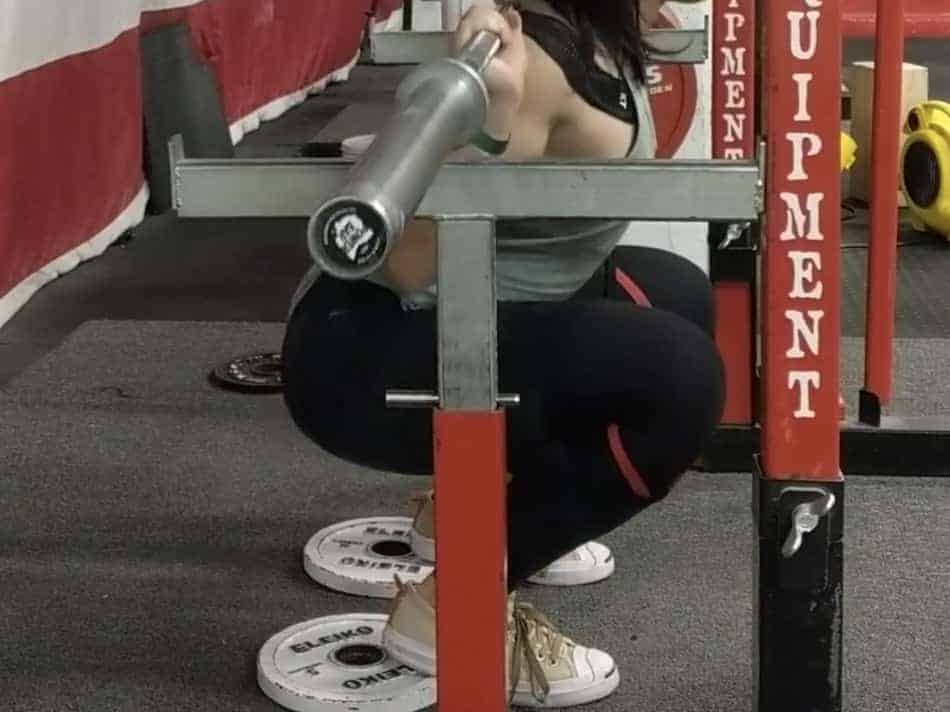This post contains affiliate links.

While working at my first full-time job, I ate junk food for my meals at odd hours of the day, slept maybe 4 hours each night, and exercised a few days per month. As a result, I carried around a lot of excess weight in my mind and body. I noticed that I was dragging my feet as I was walking, and I needed change.
So how do you start a fitness journey?
We ranked the four pillars for the most effective approach to fitness (#1 being the highest priority).
- Mindset
- Nutrition
- Rest
- Exercise
Keep reading to learn about these four pillars and the significance of each.
Table of Contents
#1. Build An Open Mindset
If a get-fit-quick plan existed, why’s it the biggest mystery of all time? Like any other win in life, success requires a lot of time and effort. It all starts with the reprogramming of your current mindset.
I know, that’s not what anyone wants to hear, but there’s no step-by-step method to success.
Here are a few mindset tips for fitness.
- Exercise to feel good for yourself, not to impress others.
- Be a student: curious, proactive, patient.
- Anything is possible with focus and experimentation.
#2. Proper Nutrition & Hydration
Before considering any physical activity, make sure you take nutrition and hydration seriously. This is the fuel that provides energy to move your body.
Counting macros can help you lose weight, build lean muscle, and build more energy. Macronutrients are three categories of nutrients (protein, carbohydrates, and fats) that provide you with most of your energy. Protein helps repair and build your body’s tissues and is considered the most satiating macronutrient. A general rule of thumb is to eat 1 gram of protein per pound of body weight for someone active regularly. At one point, I was tracking my food, but it’s the most sustainable to eyeball track protein intake.
Here are some of my favorite high-protein foods.
- One large egg (6 grams of protein)
- One cup of oats (11 grams of protein)
- One 6-ounce Greek yogurt (17 grams of protein)
- One cup whole milk (8 grams of protein)
- One roasted chicken breast (53 grams of protein)
- One 3-ounce lean beef (25 grams of protein)
- One 3-ounce fish (19 grams of protein)
- One cup cooked quinoa (8 grams)
- One cup boiled lentils (18 grams)
- One cup broccoli (3 grams of protein)
- Whey protein supplements
And hydration! It’s essential to keep your body functioning. I used to be very bad with hydrating. I finally invested in a half-gallon bottle, and now I’m a well-hydrated machine.
Why should you keep a giant water bottle around you?
- Carry a lot of water around at all times. I find that if I’m out and about (running errands, on vacation, etc.), the first thing to go out the window is hydration.
- Bottles help to track drinking progress. I keep track of the number of refills to make sure I’m hydrating enough every day.
#3. Adequate Rest & Recovery
Another thing that many people overlook when it comes to fitness is rest and recovery.
Adequate sleep is so critical for a fully functional body and mind. Losing sleep sacrifices your ability to focus. I was guilty of this when I was sleeping 4 hours each night, which resulted in battling mid-day naps at my desk. When I started sleeping 8 hours a night, I became more productive with every activity, and the acne and scars that I struggled with for a whole decade started to fade.
Recovery will look different for everyone depending on your body and goals, but it’s critical for all levels of athletes for muscle recovery. There are two types of recovery: active recovery and passive recovery.
What is the difference between active recovery and passive recovery? Active recovery involves low-intensity movements like walking, yoga, and cycling, while passive recovery involves no activity whatsoever.
#4. Exercise Consistently
Building your mindset, nutrition, and rest will set solid foundations for a healthy journey towards fitness.
What will work for you is finding the activities that you enjoy. So take your time and explore different options.
Here are a few exercise ideas that you can quickly and easily incorporate into your lifestyle.
Strength
- Push Pull Leg Routine for as long or short as you want (Required Equipment: Dumbbell, Kettlebell, Barbell)
- Bring resistance bands to your local park while watching your kids or babysitting (Required Equipment: Resistance Bands)
- Carry your groceries (No Equipment Required)
Endurance
- Walk everywhere – work, supermarket, etc. (No Equipment Required)
- Run during your breaks (No Equipment Required)
- Jump rope for 10 minutes – it’s intense! (Required Equipment: Jump Rope)
Flexibility
- Stretch for 5-10 minutes before and after your workouts (Required Equipment: Yoga Mat)
- Follow along to yoga for a few minutes after you wake up or before bed (Required Equipment: Yoga Mat)
Related Questions
What are some tips to stay consistent with fitness?
- Find your purpose and enjoy the journey to stay motivated.
- Schedule time in your calendar.
- Have some flexibility in your schedule.
- Pack your workout clothes the day before.
- Stop making up excuses, and execute. You’ll feel better after doing it.
HomeStrengthToolbox.com is a participant in the Amazon Services LLC Associates Program, an affiliate advertising program designed to provide a means for sites to earn advertising fees by advertising and linking to Amazon.com. We also participate in other affiliate programs which compensate us for referring traffic at no extra cost to you.
